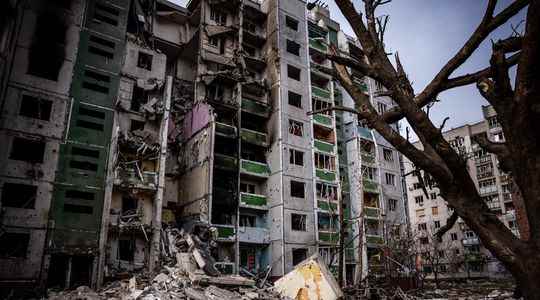Civilians remain stuck in the besieged city. The evacuation of the inhabitants of Mariupol, a strategic Ukrainian port surrounded by Russian forces and their allies, has been postponed. In question: multiple Russian violations of the ceasefire, accused this Saturday, March 5, the town hall. On the tenth day of the Ukrainian war, Vladimir Putin’s desire to invade his European neighbor does not weaken, despite the warning signals launched by the international community.
If the fighting continues in some Ukrainian cities, the conflict is also played out in the field of numbers. On social networks, images of burnt tanks, charred buildings… However, the number of dead remains little communicated. Whether on the Ukrainian side or on the Russian side, the death toll seems to be used as a political weapon, making it difficult to verify these losses.
The Russian ambassador in Geneva (Switzerland), Gennady Guatilov, affirmed that there had been “2870 victims on the Ukrainian side, 498 on the Russian side”, relying on figures from the Russian Ministry of Defense. It should be noted that it was necessary to wait until Sunday February 27 for the Kremlin to recognize losses in its army, but without delivering the balance sheet at first. According to Ukraine and Western observers, this assessment is largely underestimated, Kiev speaks of more than 9,000 Russian soldiers. The gap between the figures for Kiev and Moscow is significant, so much so that it is difficult not to see a well-crafted communication strategy on both sides. If Ukraine displays the Russian victims, its assessment concerning its own deaths remains opaque and arrives in droplets: Wednesday, March 2, the Ukrainian ministry in charge of the emergency services thus reported more than 2000 dead civilians.
Proof that this funeral count is at the heart of an information war, Ukraine has put a site online, baptized 200rf.com which refers to the code used for soldiers killed in action. On this platform, killed or captured Russian soldiers are identified. The stated objective is to help the Russian population find their loved ones who have gone to battle. On Wednesday, the Ukrainian Defense Minister offered the soldiers’ mothers to pick up their sons in Ukraine. Under cover of a fraternal gesture, Kiev also sees an opportunity for instrumentalization.
“Showing the bodies and the prisoners to the relatives is a means of psychological pressure on the Russian population. But it also makes it possible to identify the dead and find the living. Because it is not the Russian state that will take care of it “, assures on Twitter Anna Colin Lebedev, teacher-researcher, specialist in post-Soviet societies.
Victims who could embarrass Putin
Moreover, the mothers of soldiers constitute a very important group in Russia that Vladimir Putin has no interest in alienating. If the number of official deaths were to multiply, their disclosure could place the Russian president in political embarrassment: how to explain so many victims, if there is no war? In Russia, the term “war” is banished by Kremlin propaganda which describes the Ukrainian invasion as a “special operation”.
Media that betray this rule pay a high price: the Echo of Moscow, Russia’s first independent radio station, announced the liquidation of the company after the media was deprived of broadcasting for “disseminating false information” on the war in Ukraine. “Russian propaganda is very active, which is why it is very important to disseminate information about what is really happening, how many people are dying in this war, how many Russian soldiers have been killed and captured, etc.”, declared at L’Express, Marina Litvinovitch, an activist for human rights in Russia, who is fighting to publicize the situation in Ukraine.
If Ukraine and Russia have no interest in formalizing the count of their own victims, international organizations are trying to fill the void. But here too, the task seems difficult. During the debate before the UN Human Rights Council in Geneva, Ukrainian Ambassador Yevheniia Filipenko said that “thousands of innocent civilians have lost their lives”. Because of the fighting, international observers are struggling to update their figures and have to rely on provisional assessments communicated by the UN, which are probably underestimated. Between February 24 at 4 a.m. and March 2, 2022, the Office of the United Nations High Commissioner for Human Rights (OHCHR) recorded 802 civilian casualties in Ukraine, including 249 people killed.
“The human cost of the ongoing clashes is likely to be much higher as access and security issues make it difficult to verify the true number of dead and injured,” he said. the report published on March 3. Many NGOs have been forced to leave war zones, which means that certain places have become inaccessible to them. Instead of drawing up complete reports, the organizations identify the victims on a case-by-case basis, according to the information they have on the ground. On February 28, Amnesty International France identified “three attacks which could constitute war crimes in Kharkiv, on February 28” with a toll of “at least nine civilians killed, including children.”
